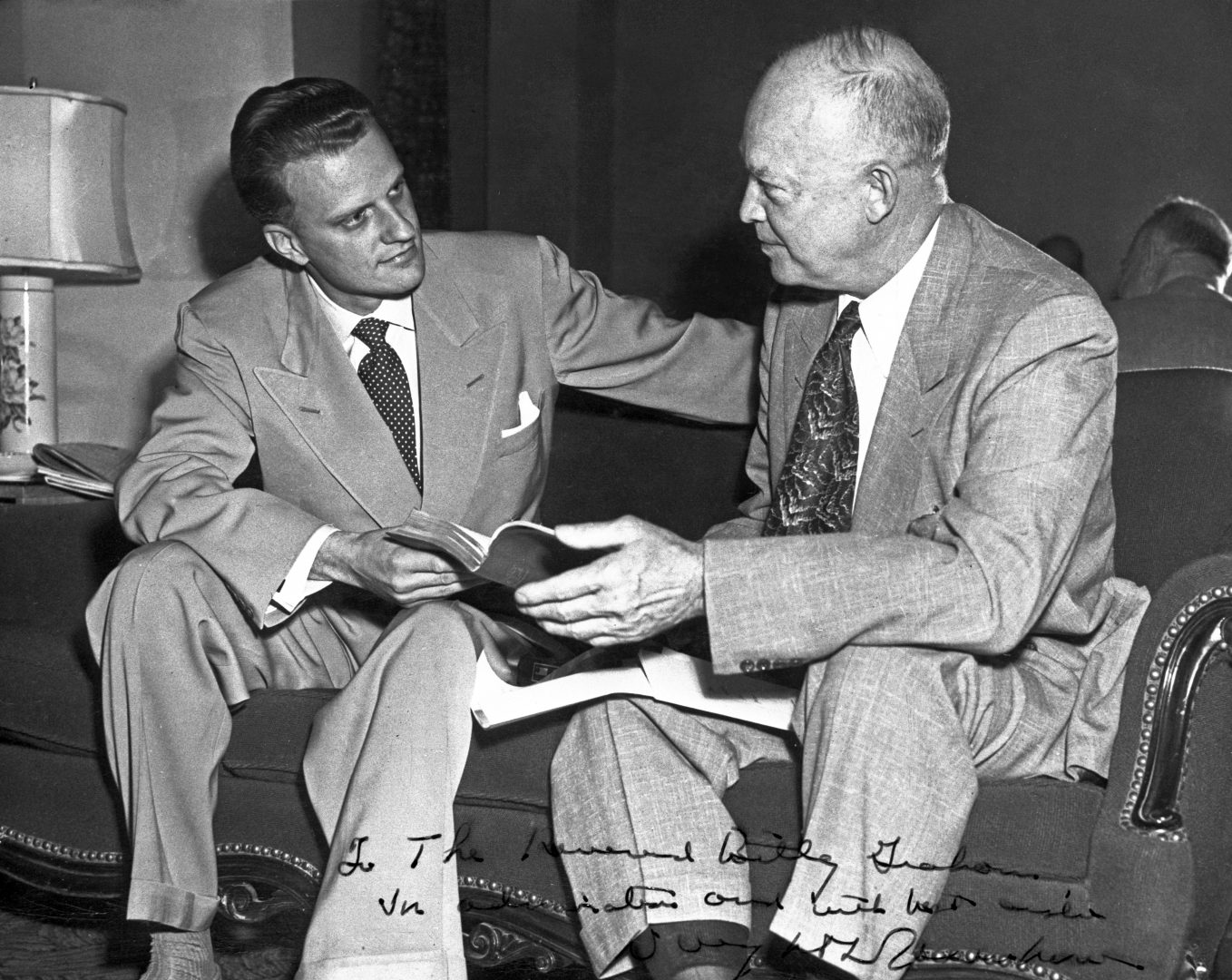
Billy Graham (left) with President Dwight D. Eisenhower, both holding the same Bible. 1957.
Courtesy of Billy Graham Evangelistic Association

Billy Graham (left) with President Dwight D. Eisenhower, both holding the same Bible. 1957.
Courtesy of Billy Graham Evangelistic Association

Courtesy of Billy Graham Evangelistic Association
Billy Graham (left) with President Dwight D. Eisenhower, both holding the same Bible. 1957.
Explore the life and career of one of the best-known and most influential religious leaders of the 20th century. From modest beginnings on a North Carolina farm, Graham rose to prominence with a fiery preaching style, movie-star good looks and effortless charm. His early fundamentalist sermons harnessed the apocalyptic anxieties of a post-atomic world, exhorting audiences to adopt the only possible solution: devoting one’s life to Christ. Graham became an international celebrity who built a media empire, preached to millions worldwide, and had the ear of tycoons, royalty and presidents. At age 99, he died a national icon, estimated to have preached in person to 210 million people. Billy Graham examines the evangelist’s extraordinary influence on American politics and culture, interweaving the voices of historians, scholars, witnesses, family, and Graham himself, to create a kaleidoscopic portrait of a singular figure in the American experience. Directed by Sarah Colt, produced by Helen Dobrowski and executive produced by Cameo George,
Born November 7, 1918, on a dairy farm in Charlotte, North Carolina, to a conservative Presbyterian family, Graham grew up in a fundamentalist South where preachers were considered cultural heroes. He discovered his own talent for converting people to Christ as a college student, preaching in small Florida churches. In 1949, seeking a larger audience, Graham headed to Los Angeles to hold a series of revival meetings — “crusades” he called them. Charismatic, energetic, with a voice “like a train whistle on a prairie,” Graham gave his message a sense of urgency by connecting it to current events, including the recent Soviet test launch of an atomic bomb. His anti-Communist rhetoric caught the attention of newspaper publisher William Randolph Hearst, who directed his editors to give Graham front-page coverage. Attendance surged, and Graham was catapulted onto the national stage.
Departing from Christian fundamentalist tradition, Graham associated his crusades with influential civic leaders, celebrities and politicians, increasingly connecting his ministry to power and influence. His anti-Communism, pro-capitalist message resonated with many, including the business community, and his empire grew. In 1950, he established the Billy Graham Evangelistic Association. Guided by Graham’s instinctive media savvy, the BGEA moved into modern telecommunications, launching a weekly radio program that reached 20 million listeners within weeks of its first broadcast, creating TV programs and establishing a movie studio. In 1954, Graham took his message to the UK, packing the 11,000-seat Harringay Arena in London for 12 weeks. By the time the crusade came to a close, Graham had arguably become the most famous person in the world.
Watch Billy Graham on American Experience Monday May 17 at 9pm on WITF.
The days of journalism’s one-way street of simply producing stories for the public have long been over. Now, it’s time to find better ways to interact with you and ensure we meet your high standards of what a credible media organization should be.